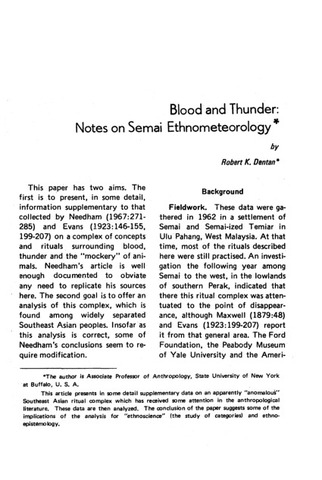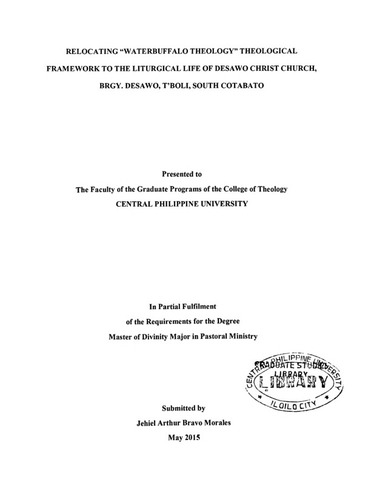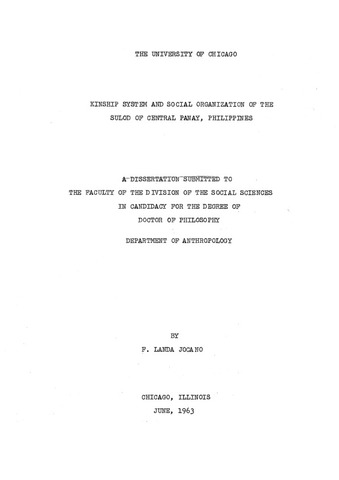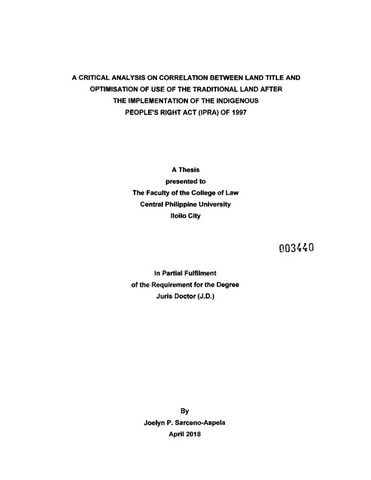Ipakita ang simpleng tala ng item
Blood and thunder: Notes on Semai ethnometeorology
| dc.contributor.author | Dentan, Robert K. | |
| dc.date.accessioned | 2022-08-03T00:27:02Z | |
| dc.date.available | 2022-08-03T00:27:02Z | |
| dc.date.issued | 1976 | |
| dc.identifier.citation | Dentan, R. K. (1976). Blood and thunder: Notes on Semai ethnometeorology. Southeast Asia Journal, 9(2), 32-55. | en_US |
| dc.identifier.issn | 0038-3600 | |
| dc.identifier.uri | https://hdl.handle.net/20.500.12852/2184 | |
| dc.description | Journal article | en_US |
| dc.description.abstract | This paper has two aims. The first is to present, in some detail, information supplementary to that collected by Needham (1967:271- 285) and Evans (1923:146-155, 199-207) on a complex of concepts and rituals surrounding blood, thunder and the “mockery” of animals. Needham’s article is well enough documented to obviate any need to replicate his sources here. The second goal is to offer an analysis of this complex, which is found among widely separated Southeast Asian peoples. Insofar as this analysis is correct, some of Needham’s conclusions seem to require modification. Background Fieldwork. These data were gathered in 1962 in a settlement of Semai and Semai-ized Temiar in Ulu Pahang, West Malaysia. At that time, most of the rituals described here were still practised. An investigation the following year among Semai to the west, in the lowlands of southern Perak, indicated that there this ritual complex was attentuated to the point of disappearance, although Maxwell (1879:48) and Evans (1923:199-207) report it from that general area. The Ford Foundation, the Peabody Museum of Yale University and the American Museum of Natural History supported this research. The Singapore Botanic Gardens and the zoology department of the University of Malaysia helped identify plant and animal specimens. The Ulu Pahang Semai. The economy of these Semai and their Temiar neighbors to the north rests on swidden agriculture, with sup plementary hunting, fishing and gathering. As Austroasiatic-speakers, they are related, albeit rather distantly, to the nomadic “Semang,” with whom there seems to have been some cultural contact. Their technology is rather simple. | en_US |
| dc.language.iso | en | en_US |
| dc.publisher | Central Philippine University | en_US |
| dc.subject.lcsh | Senoi (Southeast Asian people) | en_US |
| dc.subject.lcsh | Ethnometeorology | en_US |
| dc.subject.lcsh | Malaysia | en_US |
| dc.subject.lcsh | Squalls | en_US |
| dc.subject.lcsh | Indigenous peoples--Social life and customs | en_US |
| dc.subject.lcsh | Senoi (Southeast Asian people)--Rites and ceremonies | en_US |
| dc.subject.lcsh | Indigenous peoples | en_US |
| dc.subject.lcsh | Senoi (Southeast Asian people)--Social life and customs | en_US |
| dc.subject.lcsh | Folklore | en_US |
| dc.subject.lcsh | Thunderstorms | en_US |
| dc.title | Blood and thunder: Notes on Semai ethnometeorology | en_US |
| dc.type | Article | en_US |
| dcterms.accessRights | Publicly accessible | en_US |
| dc.citation.firstpage | 32 | en_US |
| dc.citation.lastpage | 55 | en_US |
| dc.citation.journaltitle | Southeast Asia Journal | en_US |
| dc.citation.volume | 9 | en_US |
| dc.citation.issue | 2 | en_US |
| local.subject | Semai | en_US |
Mga file sa item na ito
Lumilitaw ang item na ito sa mga sumusunod na (mga) Koleksyon
-
Southeast Asia Journal [188]





